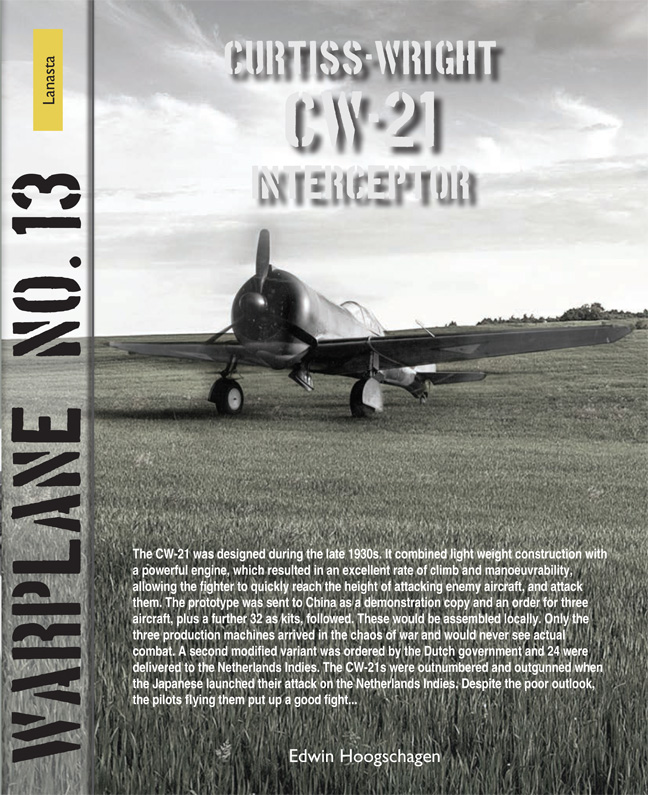Book contents
Summary
During the early stages of the Sino-Japanese war, which had erupted in July 1937, it quickly became apparent that the Chinese air force urgently required modern fighter aircraft which combined a high rate of climb with superior manoeuvrability.
The Central Aircraft Manufacturing Company (CAMCO), founded by American William Douglas Pawley, had assembled a series of Curtiss Hawk II and III fighter planes for the Chinese Nationalist government. Pawley was also president of Intercontinental Corporation, this company was sales representative for Curtiss-Wright in China during the second half of the 1930s. The strong ties between Pawley and Curtiss-Wright were the stepping stone for development of a new light weight fighter which would meet the demands of modern air war.
DEVELOPMENT
Work on this new fighter type started in the St. Louis branch of the Curtiss-Wright Company. The most important design philosophy was to employ a high power engine combined with an airframe as light and compact as possible. The design team, led by Willis Wells (project engineer) and George A. Page jr. (chief engineer), drafted a design which would evolve into the CW-21 fighter.
THE CURTISS-WRIGHT COMPANY
The Curtiss-Wright company was formed on 26 June 1929 when the Curtiss Aeroplane and Motor Company merged with the Wright Aeronautical Corporation. The company was organised in an aircraft division (Curtiss) and a division constructing engines and propellers (Wright). The headquarters was located in New York City. During the years before the merger Curtiss had purchased the Keystone, Loening, Robertson, Travel Air and Moth companies, but these were all dissolved during the Great Depression of the 1930s. Production of some types were continued under the Curtiss-Wright company name at the St. Louis facilities – the former Robertson plant. Other businesses such as the Curtiss-Wright Flying service had to discontinue activities.
The completely redesigned CW-19R-12 advanced trainer, armed with two forward firing light machineguns. (Missouri historical society collection)
The new fighter shared some design elements first used in the CW-19L, which was originally designed by the Curtiss- Robertson company as CR-2 Coupe, before this company was absorbed in the Curtiss- Wright company. The CW-19L was introduced in 1935 and was intended as private aircraft featuring side by side seats and streamlined fixed landing gear, covered with trouser type fairings.
- Type
- Chapter
- Information
- CW-21 Interceptor , pp. 2 - 48Publisher: Amsterdam University PressPrint publication year: 2023



